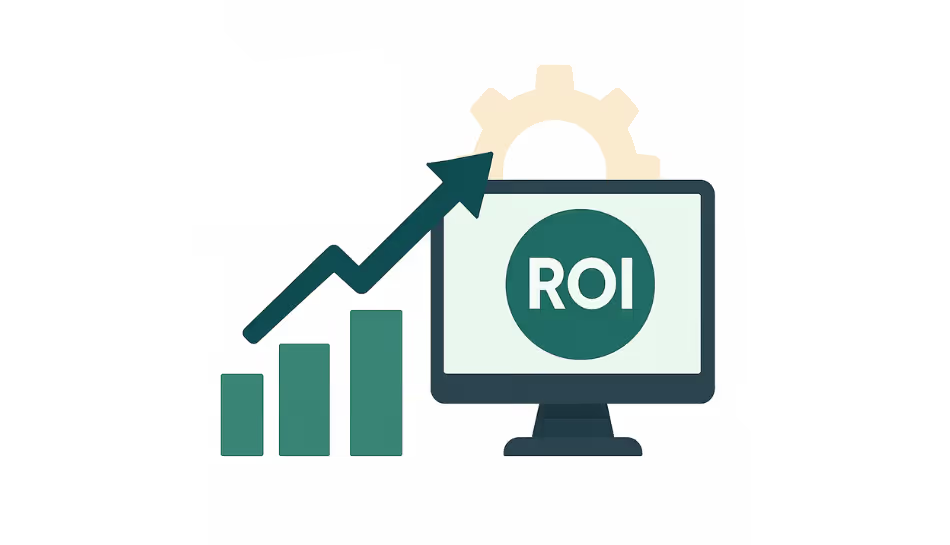Investing in software can feel like a big leap, especially when it comes to ERP (Enterprise Resource Planning) systems. But here’s the truth: when implemented the right way, ERP software doesn’t just pay for itself... it pays you back.
In 2025, businesses of all sizes are choosing ERP not just for operational ease, but for measurable Return on Investment (ROI). Whether it’s saving time, cutting costs, or unlocking new growth opportunities, ERP helps companies turn efficiency into profit. Let’s break down how ERP drives real, visible ROI for your business.
What Do We Mean by ERP ROI?
ERP ROI? is the value your business gains in return for the money spent on ERP software. This includes cost savings, productivity improvements, faster reporting, and better decision-making.
Think of it this way: ERP isn’t just an expense. It’s a strategic investment that helps you run leaner, work smarter, and scale faster.
1. Cuts Down Operating Costs
One of the biggest ways ERP boosts ROI is by reducing daily operational costs. Here's how:
- Automates manual processes like billing, payroll, inventory updates
- Minimizes data entry errors that lead to costly mistakes
- Reduces time spent switching between multiple tools or systems
By streamlining everyday tasks, ERP frees up time and resources, so your team can focus on work that actually grows the business.
2. Speeds Up Decision Making
ERP gives you real-time insights into your company’s operations, sales trends, stock levels, customer data, financials, all in one place.
With accurate, updated reports at your fingertips, decisions are faster and more informed. You can:
- Forecast demand more accurately
- Avoid overstocking or understocking
- Respond quickly to cash flow issues
All this translates to better financial control and fewer surprises, improving your overall profitability.
3. Reduces IT and Maintenance Costs
If you’re currently using several disconnected tools, you’re likely spending more on licenses, maintenance, and support.
ERP brings all core business functions under one system, which means:
- Lower total software costs
- Fewer IT headaches
- Centralized updates and maintenance
Especially with cloud-based ERP systems, your infrastructure costs drop significantly, improving ROI over time.
4. Improves Customer Satisfaction
Happy customers are repeat customers, and ERP plays a direct role here.
With ERP, you can:
- Deliver orders faster
- Track service quality
- Manage customer feedback in one place
The result? Fewer complaints, more loyalty, and better sales performance, all of which positively impact revenue.
5. Enhances Employee Productivity
ERP systems reduce repetitive tasks and manual coordination between teams. Employees waste less time, make fewer mistakes, and work more efficiently.
From HR to finance to supply chain, every department gets access to tools that help them do more in less time. That boost in productivity drives overall business growth and increases your returns.
6. Scales With Your Growth
ERP isn’t just about handling today’s operations, it’s built for tomorrow.
As your company grows, ERP scales with you. You can add users, expand into new locations, or integrate new modules without starting from scratch. This future-proofing means your initial investment continues to deliver value over time, increasing long-term ROI.
Measuring ERP ROI
To track the ROI of ERP implementation, focus on metrics like:
- Reduction in operating costs
- Time saved on key processes
- Increase in order accuracy
- Shorter financial close cycles
- Customer satisfaction rates
- Revenue growth
These indicators can be tracked within the ERP system itself, making it easier to measure impact over time.
Final Thoughts
ERP software is not just about automation, it’s about transformation. When implemented with the right goals and training, it becomes a powerful tool to increase your company’s ROI year after year.
In 2025, businesses that invest in ERP are seeing not just smoother workflows, but better margins, happier teams, and healthier bottom lines. So if you're thinking about ERP, don't ask, “How much will it cost?” Ask, “How much will it save, and earn, over time?”



